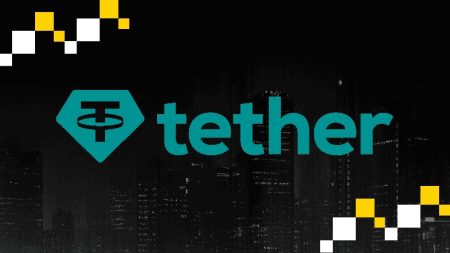The Great AI Backlash: How Tech’s Obsession with Artificial Intelligence Is Alienating Its Users
In an era where artificial intelligence has become the technological world’s North Star, a growing chorus of frustrated users is challenging Silicon Valley’s relentless AI integration strategy. What began as isolated complaints has evolved into a full-blown consumer rebellion against what many see as unnecessary, intrusive, and often poorly implemented AI features. This growing disconnect between tech companies’ AI ambitions and actual user needs reveals a fundamental misunderstanding of what consumers truly want from their digital experiences.
The Spark of Revolt: When Users Finally Said “Enough”
The digital discontent crystallized recently in a viral Hacker News thread titled “I’m drowning in AI features I never asked for and I hate it.” The post struck a powerful chord, quickly accumulating over 300 upvotes and 200 impassioned comments. What began as criticism of a MakeUseOf article transformed into something more significant – a collective manifesto articulating widespread frustration with the tech industry’s AI-at-all-costs approach.
“It feels like we’ve gone from ‘Don’t be evil’ to ‘You will use our AI and you will like it,'” one commenter observed, capturing the sentiment of betrayal many users feel toward platforms they once trusted. This reaction isn’t merely technophobia or resistance to change – it represents a genuine dissatisfaction with how AI features are being implemented without consideration for user experience or preference.
The complaints span virtually every digital touchpoint. Google’s replacement of its Assistant with Gemini has left many users frustrated by the new system’s inability to handle basic functions like setting alarms or controlling smart home devices. Meanwhile, Gemini’s verbose information overviews often bury the organic search results users actually seek. In productivity tools like Google Sheets, intrusive AI suggestions disrupt users’ workflow by obscuring their active edits. Even web browsers aren’t immune, with Firefox users reporting that AI context menus trigger jarring UI shifts that interrupt their browsing experience.
From Convenience to Cognitive Burden: How AI Integration Went Wrong
The core of user discontent isn’t with artificial intelligence itself, but rather with its implementation. The most frequent complaint centers on forced integration that prioritizes showcasing AI capabilities over enhancing user experience. This approach transforms what should be helpful tools into unwelcome intrusions.
Take smartphone interfaces, where AI summaries of notifications – presumably designed as a convenience – often create additional cognitive work for users who must now process both the summary and the original content. Or consider productivity software, where AI features frequently appear as obtrusive buttons that introduce lag and distraction to previously streamlined workflows.
“Even niche software isn’t spared,” noted one industry analyst. “We’re seeing updates that shoehorn AI functionality into places where a simple search function or intuitive design would be more effective. It’s technology for technology’s sake, not for the user’s benefit.”
The frustration extends beyond mere inconvenience. Many users report a sense of lost agency as familiar interfaces transform without their consent. When Google Sheets interrupts a user’s work with unsolicited AI suggestions or when Atlassian’s Confluence prominently displays an AI button that slows performance, the result is a degraded experience that leaves users feeling that their needs have become secondary to companies’ AI ambitions.
The Evidence Mounts: Studies Confirm AI Burnout Is Real
What began as anecdotal complaints now has substantial research backing. A comprehensive 2025 Asana study found digital exhaustion affects an alarming 84% of employees, with 77% specifically overwhelmed by rapid AI scaling in their workplace tools. This phenomenon, dubbed the “AI Paradox,” reveals that the most frequent AI users report burnout rates of 45% – a striking indictment of tools that were ostensibly designed to reduce workload.
The broader polling landscape paints an equally concerning picture. Workplace burnout studies show 66% overall burnout, with 82% of workers at risk from rapid technological changes, including AI overhauls. A Pew Research Center study found that 52% of American workers express anxiety about AI’s potential impact on their jobs, while KPMG research documents a shift from initial “fear factor” responses to widespread “cognitive fatigue” as AI agent deployments quadruple across industries.
Academic research has begun to illuminate the psychological mechanisms behind this burnout. Several studies suggest that AI collaboration can increase counterproductive workplace behaviors through heightened feelings of loneliness and emotional drain. For employees with anxiety, supervisor-sent AI-generated emails significantly increase burnout risk, though well-integrated AI tools may boost self-efficacy for some users.
“What we’re witnessing is ‘change fatigue’ from cascading AI implementations,” explained Dr. Meredith Chen, cognitive psychologist specializing in human-computer interaction. “When organizations rapidly deploy multiple AI systems without adequate user training or consideration of how these systems interact, they risk creating a crisis of cognitive overload rather than the efficiency they intended.”
Adaptation Strategies: How Users Are Fighting Back
Faced with an onslaught of unwanted AI features, tech-savvy users are developing creative workarounds to preserve their digital sanity. The Hacker News thread that sparked the conversation quickly evolved into a knowledge-sharing forum where users exchanged tactics for navigating the AI-saturated digital landscape.
Many users reported success with browser extensions like uBlock Origin to filter out intrusive AI elements from their favorite websites and applications. More dramatic measures include abandoning mainstream operating systems altogether, with numerous commenters describing their switch from Windows to Linux distributions like Fedora or Ubuntu to escape the barrage of ads, notifications, and unwanted AI integrations.
“My gaming PC was a nightmare until I went Linux,” wrote one user, describing the newfound responsiveness and lack of distractions after making the switch. Apple received somewhat more favorable reviews for its relatively measured approach to AI integration, though even loyal Apple users expressed frustration with Siri’s apparent regression in functionality despite years of “machine learning” improvements.
Not all AI implementations were universally condemned. Some users acknowledged genuine improvements from certain AI features, such as Confluence’s time-saving search capabilities. However, these positive examples were typically characterized by their thoughtful integration, optional nature, and clear purpose – the very qualities missing from most criticized AI implementations.
The Path Forward: Balancing Innovation with User Experience
The growing backlash against forced AI integration presents both a challenge and an opportunity for technology companies. The message from users isn’t rejection of artificial intelligence itself, but rather a demand for AI that enhances rather than disrupts their digital experience.
“Users aren’t necessarily anti-AI – they’re anti-bad-product,” observed technology ethicist Dr. James Mercer. “They’re craving the option to opt out and tools that ‘just work’ without imposing a cognitive tax. The companies that understand this distinction will be better positioned to develop AI features that users actually embrace.”
This sentiment was echoed throughout the Hacker News discussion, where even technically sophisticated users expressed exhaustion with the current implementation approach. While some optimists envisioned a future where conversational interfaces might eliminate clunky web designs, skeptics dismissed much of the current AI push as profit-driven hype disconnected from actual user needs.
As AI technology continues its rapid evolution, the companies that thrive may be those that recognize the importance of choice, transparency, and genuine utility in their AI implementations. “AI is already proving to be transformative in many domains,” noted one industry observer, “but as the tools multiply faster than the reasons to use them, even true believers are starting to tune out.”
The message from users is clear: artificial intelligence should serve people, not the other way around. As the backlash grows, tech companies face a critical choice – continue forcing unwanted AI features on increasingly resistant users, or develop a more thoughtful approach that earns user trust by demonstrating real value. The outcome of this tension will likely shape the next phase of our collective digital experience.















